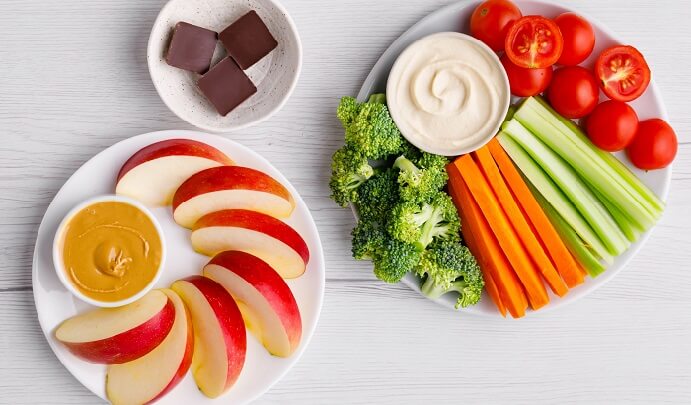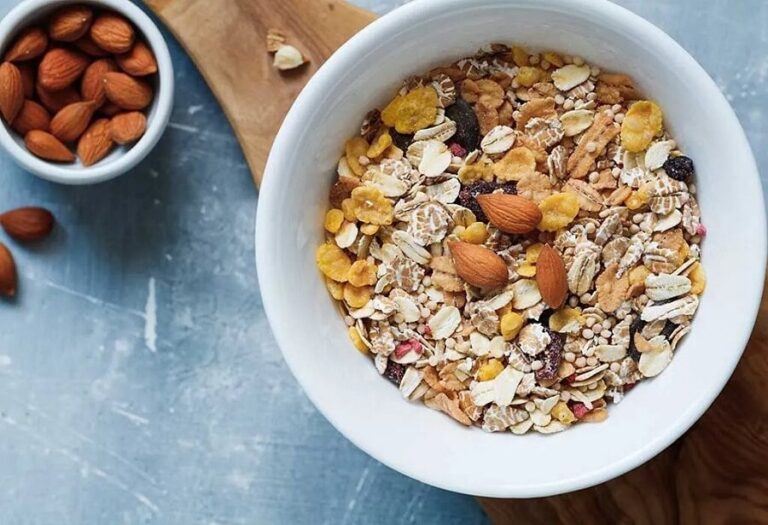The low glycemic index (low GI) diet is based on the glycemic index (GI) concept. This value uses a measurement system that classifies foods according to their effect on blood sugar levels. It was created in the early 1980s by Dr. David Jenkins, a Canadian professor.
The rates at which different foods raise blood sugar levels are rated compared to the absorption of 50 grams of pure glucose. Pure glucose is the reference food with a GI value of 100.
Studies have shown that a low GI diet can result in weight loss, lower blood sugar levels, and a lower risk of heart disease and type 2 diabetes. (1,2) A detailed description can be found below in the material of the recommended diet for type 2 diabetes. We also summarize the logic of the menu and calculate its composition in the proportions of macronutrients. The diet is suitable for people who do not require weight loss.
RELATED:
Low glycemic diet
The menu’s calorie content is about 1600 kcal per day, which means that the diet is suitable for people over 50 years with average and low body weight who lead a sedentary and moderately active lifestyle. Exercising regularly will increase your energy needs.
A meal every few hours is recommended to maintain a stable blood glucose level, which is extremely important in diabetes mellitus. The morning should start with breakfast, a light lunch, lunch, afternoon tea, and an early dinner.
Also, Rospotrebnadzor experts advise stocking up on food for two snacks; in particular, in the nutrition program presented, there is a “dry portion,” and the last supper is recommended at 9:00 pm (a small portion of yogurt)
Macronutrients
The total amount of protein in the presented menu for diabetes is about 100-110 g per day (about 25% of caloric intake), suitable for people of average and low body weight who do not engage in physical activity.
The total fat is 70 to 75 g per day (approximately 40% of the caloric intake). The fat source is exclusively lean meat and sesame and olive oils. The primary cooking method is steaming.
The total amount of carbohydrates is limited to 150 g (approximately 35% of the caloric intake). The diet contains at least 25-30 g of fiber.
Basic rules in a low menu:
- Caloric Content: 1600 – 1800 kcal
- Proteins: 100-110 g (25%)
- Fat: 70-75 g (40%)
- Carbohydrates: 150 g (35%)
RELATED:
Foods to Eat on the Low GI Diet
The low GI diet primarily involves swapping high GI foods for low GI alternatives. There are many healthy and nutritious foods to choose from. It would help if you build your diet around the following low GI foods:
- Bread: whole grain, multigrain, rye, sourdough
- Breakfast cereals: steel-cut oats, bran flakes
- Fruit: apples, strawberries, apricots, peaches, plums, pears, kiwi, tomatoes, and more
- Vegetables: carrots, broccoli, cauliflower, celery, zucchini, and more
- Starchy vegetables: sweet potatoes with orange pulp, corn, yams, winter squash
- Legumes: lentils, chickpeas, baked beans, butter beans, kidney beans, and more
- Pasta and noodles: pasta, soba noodles, vermicelli noodles, rice noodles
- Rice: basmati, Doongara, long grain, brown
- Grains: quinoa, barley, pearl couscous, buckwheat, freekeh, semolina
- Dairy and milk substitutes: milk, cheese, yogurt, coconut milk, soy milk, almond milk
The following foods contain little or no carbohydrates and therefore do not have a GI value. These foods can be included as part of the low GI diet:
- Fish and seafood: including salmon, trout, tuna, sardines, and prawns
- Other animal products include beef, chicken, pork, lamb, and eggs.
- Nuts: such as almonds, cashews, pistachios, walnuts, and macadamia nuts
- Fats and oils: including olive oil, butter, and avocado.
- Herbs and spices: such as garlic, basil, dill, salt, and pepper.
Foods to avoid
Nothing is strictly prohibited on the low GI diet. However, try to replace these high GI foods with low GI alternatives as much as possible:
- Bread: white bread, bagels, naan, Turkish bread, French baguettes, Lebanese bread
- Breakfast Cereals: Instant Oatmeal, Rice Krispies, Cocoa Krispies, Corn Flakes, Froot Loops
- Starchy vegetables: Désirée and Red Pontiac potato varieties, instant mashed potatoes
- Pasta and Noodles: Corn Pasta and Instant Noodles
- Rice: Jasmine, Arborio (used in risotto), Calrose, medium-grain white
- Dairy substitutes: rice milk and oat milk
- Fruit: watermelon
- Savory Appetizers: Rice Crackers, Thin Corn, Rice Cakes, Pretzels, Corn Chips
- Cakes and other sweets: buns, donuts, muffins, cookies, waffles, pies.
- Others: candy, licorice, Gatorade, Lucozade
Example of a low glycemic menu
This sample menu shows what a week on a low GI diet would look like. Feel free to adjust this or add low GI snacks based on your needs and preferences.
Sample weekday menu:
- Breakfast: Steamed omelet with two eggs, oats, and seeds, low-glycemic fruits 200 g, coffee with milk 250 mL
- Snack: Skimmed yogurt – 200 g, baked apple, green tea
- Lunch: Low-fat bone broth with meatballs – 250 g, grilled chicken – 200 g, garnish of steamed vegetables (broccoli, cauliflower, green beans) – 200 g
- Mid-afternoon: Whole wheat crackers – 30 g, low-fat cheese 150 grams
- Dinner: Cabbage stuffed with Caprese Salad – 100 g / 5 g, chamomile tea, natural yogurt with unsweetened jam.
Example of a day of the menu:
- Breakfast: Oatmeal porridge with coconut oil – 150 g / 8 g, Soft-boiled egg – 60 g
- Coffee with milk – glass
- Snack: plums, tangerines – 150 g, Emmental cheese – 30 g
- Lunch: Pea soup – 250 g, steamed green beans with spices and herbs – 150 g, buckwheat – 100 g Carrot and beet salad with olive oil (carrot, beet, walnuts, olive oil)
- Snack: Yogurt with apricots and almonds – 150 g / 30 g / 15 g, rye bran – 60 g, espresso – 1 cup
- Dinner: Chicken skewer, seasonal vegetables – 300 g, whole wheat bread – 150 g
Tips for Assembling Your Own Low Glycemic Index Meals
Low glycemic index meals for diabetes should include at least 400 g of vegetables per day, each containing 40-50 g of carbohydrates; the WHO recommends this.
Eating non-starchy vegetables can help you meet your fiber and mineral needs and normalize your body’s response to insulin.
Whole grains should be the primary source of carbohydrates, while white flour bread and sweet cakes should be limited as much as possible. We also remember that potatoes and other starchy vegetables should be limited.
Restricting saturated fats like cheese, fatty meats, and butter and switching to low-omega-6 vegetable oils (like olive oil or canola oil) will make your low-glycemic menu healthier.
The food list can also be adjusted (for example, if you have food allergies or other individual characteristics of the body).
The figures indicated in the nutrition example (25% caloric intake) are relevant for a sedentary lifestyle. Physically active men (even with diabetes) need more protein, approximately 1.5 – 2 g per kg of body weight of the fat mass.
Summary
The low glycemic diet is based on controlling the quality and quantity of carbohydrates and eating small meals every few hours to equalize blood glucose levels. The menu presented contains approximately 1600 kcal per day and is designed for sedentary people with diabetes. The calorie content of the diet and nutrients must be determined together with a specialist and may differ from that indicated.
RELATED:







